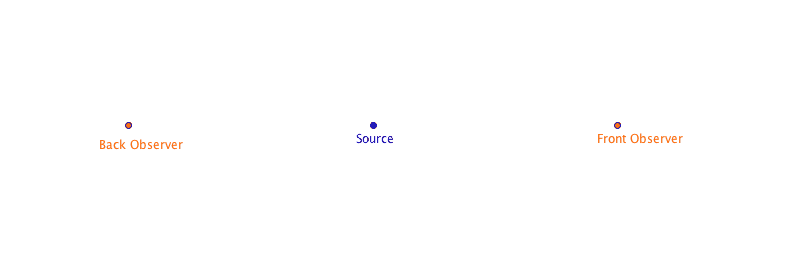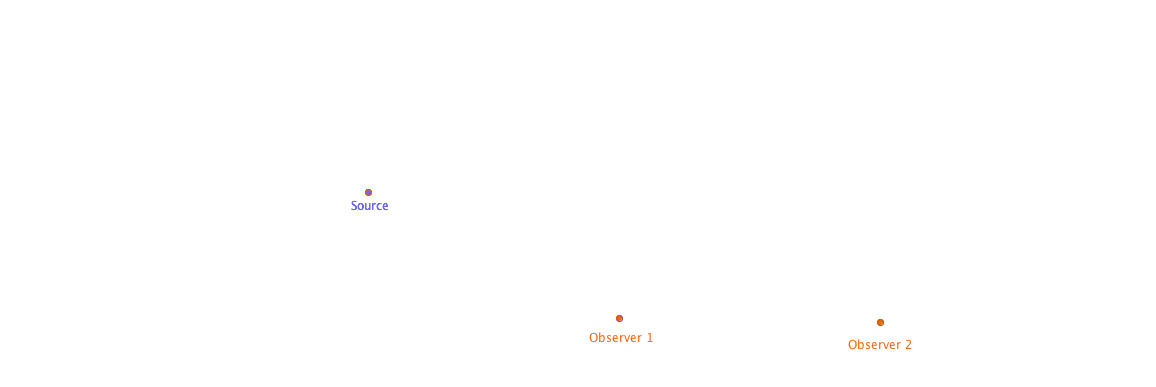|
When the source of a sound wave is moving relative to the observer who is hearing the wave, there is a shift in apparent frequency heard by the observer. Look at the animation below to get an understanding of the process.  The Doppler Effect (Sound Source Moving Slower than the Speed of Sound) Notice how the sound waves bunch up in front of the source and are stretched out behind the source. More crests reach the front observer's ear every second. Compared to the actual frequency produced by the source, the observer in front of the source perceives a higher frequency and the observer behind the source perceives a lower frequency. A similar shift is perceived if the source is stationary and the observer is moving toward or away from the source. If moving toward the sound source a higher frequency is perceived. If moving away from the source a lower frequency is perceived.  Sound Source Moving at the Speed of Sound As the source of the sound's velocity approached the speed of sound, the wavelengths in front of the source approach zero. With the waves bunching up on each other in front of the source, an area of large constructive interference builds up. If the area of large constructive interference reaches an observers ear, a loud sonic boom is heard.  Sound Source Moving faster than the Speed of Sound When the sound source is traveling faster than the speed of sound, a cone of constructive interference trails behind the source. At the moment when the edge of this cone crosses the path of an observer, a loud sonic boom is heard. Notice that the sonic boom isn't something that happens at the moment the source breaks the speed of sound, it is due to the continuous shockwave that trails behind the sound source. Look at the above animation and notice the boom that occurs just as the edge of the wave crosses the point where each observer is standing. |